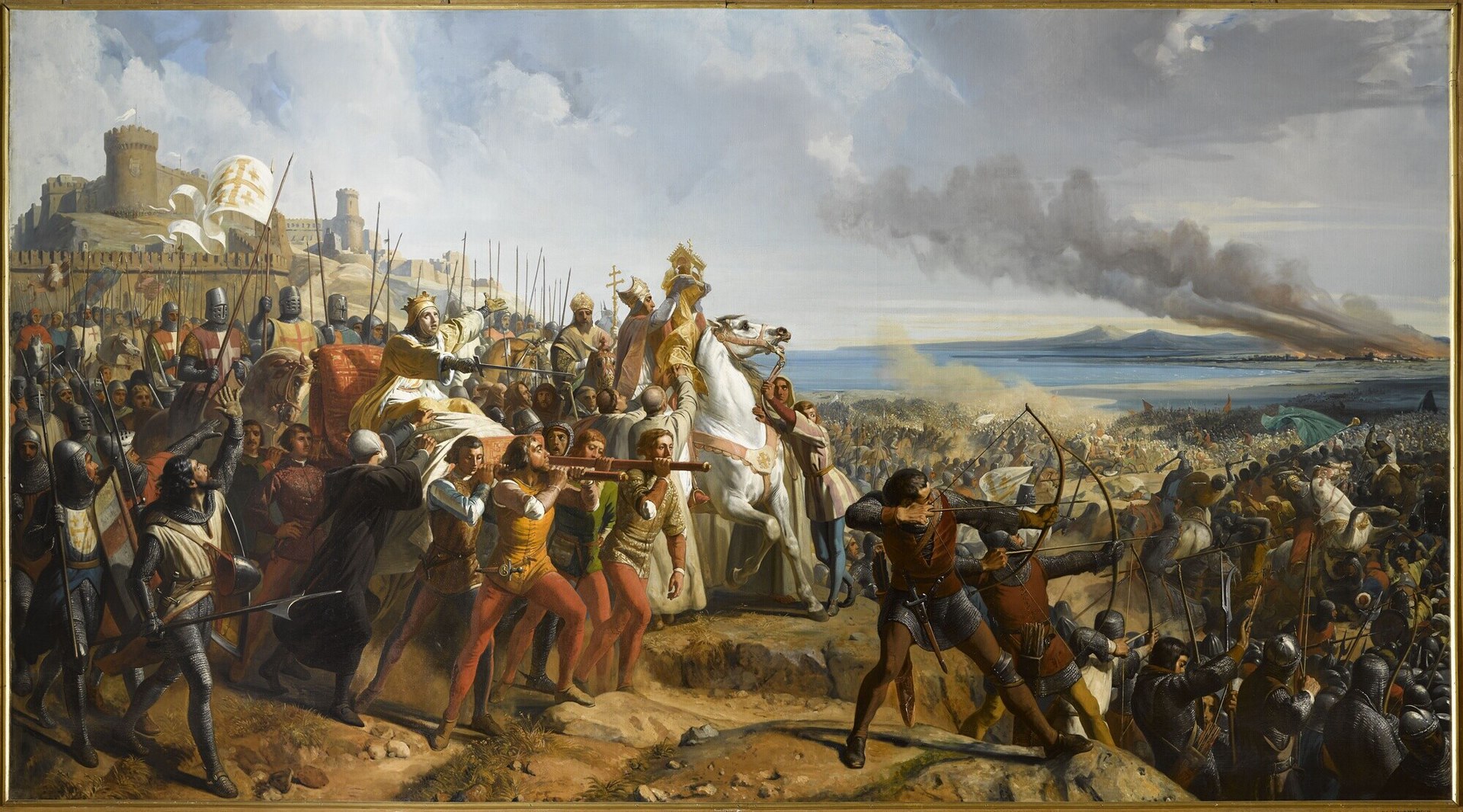A leper leads the Holy City
Baldwin IV King of Jerusalem

The "Battle of Montgisard", painting by Charles-Philippe Larivière (1842) - Wikimedia
Montgisard, Holy Land, 1177. The Christian forces, outnumbered (100 knights, 400 cavalrymen, 4,000 infantry), prepared to face Saladin and his 15,000 men, confident of capturing Jerusalem. Leading the Christians was a young king, standing in the front lines like a true leader, despite his frail body, heavily bandaged. His name was Baldwin IV, and had suffered from leprosy since his youth. Aware of the short time he had left to live and determined to etch his name alongside history's great kings, he dismounted his horse (likely falling due to his illness), prayed before the True Cross, and urged his men to charge, leading them into battle himself. Against all odds, they forced the enemy to retreat, achieving a great victory.
The Battle of Montgisard marks the pinnacle of the reign of the "Leper King". Born in 1161 to Amalric I, Baldwin was raised at court under the tutelage of William of Tyre, who was the first to see that the future king did not feel pain in his right arm, later diagnosing leprosy, which would develop into the lepromatous form. He ascended to the throne at 13, under Raymond III of Tripoli, with whom he negotiated a peace treaty with Saladin in 1175. Given the king’s fragile health, few believed he would reign for long or prove to be a strong ruler. However, Baldwin IV possessed an energetic and resolute character, fully aware that to be remembered, he needed to accomplish significant military and political feats.
In 1176, Baldwin broke the peace with Saladin and captured Damascus with great military skill. To secure his throne, he arranged the marriage of his sister, Sibylla, to a relative of the King of France (she would later marry Guy de Lusignan). He also organized an expedition to invade Egypt, which achieved limited success. His reign saw fluctuating fortunes on the battlefield between 1178 and 1179. By 1183, blind and severely weakened by leprosy, Baldwin appointed his nephew, Baldwin V, as his heir and co-ruled with him until his death in 1185, at the age of 24.
Despite his short life, Baldwin IV succeeded in uniting Egypt and Syria under the royal crown, leaving a legacy as a warrior king who defied both his illness and the odds.
Steven Runciman, A History of the Crusades I: The First Crusade and the Foundation of the Kingdom of Jerusalem, Penguin, 2016
Steven Runciman, A History of the Crusades II, Penguin UK, 2016
Steven Runciman, A History of the Crusades III, Penguin UK, 2016
Antonio Musarra, Le crociate l'idea, la storia, il mito, Il mulino, 2022
2025-08-11
Salvatore Ciccarello
